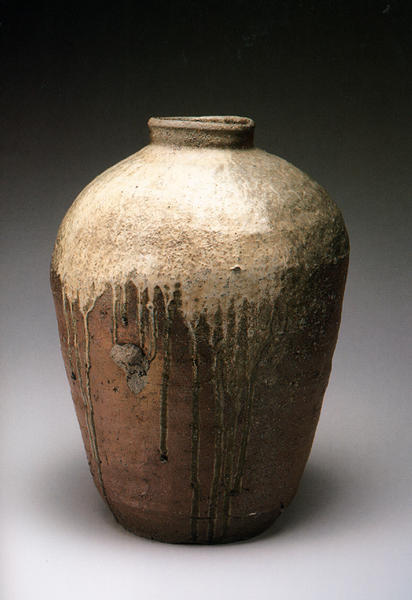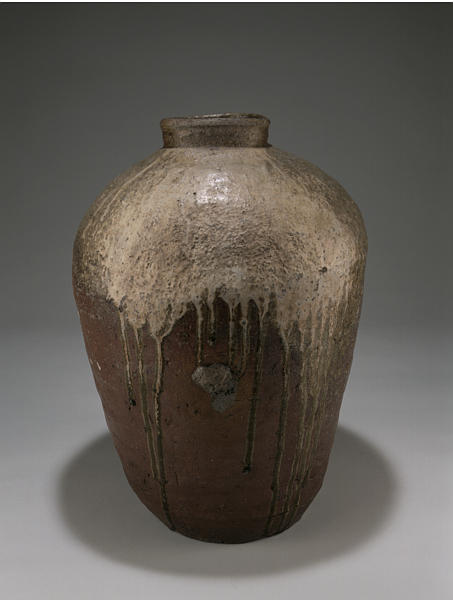Jar
- Tamba kiln, Hyogo pref.
- Nambokucho period
- 14c
- Tamba ware, natural ash glaze
- H-47.8 D-35
Catalogue Entry
Tanba is the site of one of the six classic ceramic kilns of Japan whose origin dates back to the medieval period. Tanba kilns are found at the foot of the mountains around Onobara, Tachikui and Kamaya areas of Konda-cho in Hyogo Prefecture. The history of ceramic production in this area can be traced back to the late 12th century, when production began. An influence from Tokoname ware is evident in early Tanba pieces. In the beginning of the 15th century, pots with bluish-green natural ash glaze contrasting against a deep brown clay surface began to be produced. The production of tea ware, such as tea containers and flower vases, did not begin until the second half of the Momoyama period (1573-1615), later than other ceramic producing areas. Tanba ware is also known today as Tachikui ware.
This jar has a short neck with rounded lip. Because of the shape of the mouth, this piece may perhaps have been produced in the Muromachi period (1392-1573), although it is more likely to have been produced in the mid-14th century in the Nanbokucho period (1336-1392), judging from the overall shape of the jar a slight taper of a rather long body toward a broad bottom. A piece adjacent to this jar during the firing appears to have touched it, producing a protrusion like a navel in the middle of the jar's body. There is evidence of shaving of excess clay on the jar close to the bottom. This kind of jar is referred to as btan "Bizen and Tanba," since it is not clear if it was fired in Bizen or Tanba. This jar, with light reddish brown color of the clay and a graceful shape, was fired with a considerable level of expertise. The natural ash glaze changes its color from white to green as it cascades down from the shoulders, making this piece all the more exquisite.

